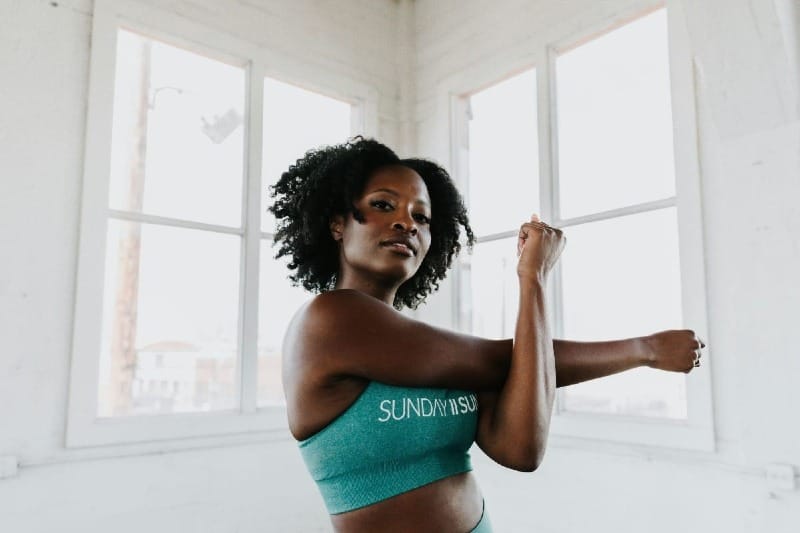Women's hormonal health is a complex and often overlooked aspect of overall wellness. This article explores holistic exercise approaches that go beyond traditional gym workouts to help women achieve hormonal balance and improve their quality of life.
Key Takeaways:
- Hormonal balance is crucial for women's overall health and well-being
- Exercise plays a vital role in regulating hormones and managing symptoms
- Holistic approaches combine physical activity with stress management and lifestyle changes
- Tailored exercise routines can address specific hormonal issues throughout a woman's life
- Consistency and personalization are key to achieving optimal results
Women's hormonal health is a delicate balancing act that affects every aspect of their lives, from mood and energy levels to reproductive health and longevity. While traditional gym workouts can certainly contribute to overall fitness, a more holistic approach to exercise can yield significant benefits for hormonal balance[1][2].
Understanding Women's Hormonal Health
Hormones are chemical messengers that regulate various bodily functions, including metabolism, growth, and reproduction. For women, hormonal fluctuations throughout their lives can lead to a range of challenges, from menstrual issues to menopausal symptoms[3].
Key Hormones and Their Functions
- Estrogen: Regulates the menstrual cycle and affects bone density, skin health, and mood
- Progesterone: Supports pregnancy and balances estrogen
- Testosterone: Influences libido, muscle mass, and energy levels
- Cortisol: Manages stress response and affects metabolism
- Insulin: Controls blood sugar levels and energy storage
The Role of Exercise in Hormonal Balance
Regular physical activity has been shown to have a positive impact on hormonal health. Exercise can help regulate insulin sensitivity, reduce cortisol levels, and improve the production and balance of sex hormones[4].
Benefits of Exercise for Hormonal Health
- Reduces stress and cortisol levels
- Improves insulin sensitivity and blood sugar control
- Boosts mood-enhancing neurotransmitters like serotonin and dopamine
- Supports healthy weight management
- Enhances sleep quality, which is crucial for hormonal balance
Holistic Exercise Approaches for Women
While traditional gym workouts can be beneficial, a more comprehensive approach to exercise can address the unique needs of women's hormonal health[2][5].
Yoga and Mind-Body Practices
Yoga combines physical postures, breathing techniques, and meditation to promote overall well-being. Regular practice can help reduce stress, improve flexibility, and balance hormones.
- Restorative yoga: Gentle poses that promote relaxation and reduce cortisol levels
- Power yoga: More intense practice that can boost metabolism and improve insulin sensitivity
- Meditation: Helps manage stress and promotes emotional balance
Strength Training
Incorporating resistance exercises into your routine can have significant benefits for hormonal health.
- Builds lean muscle mass, which supports metabolism and insulin sensitivity
- Helps maintain bone density, especially important for postmenopausal women
- Boosts testosterone levels, which can improve energy and libido
High-Intensity Interval Training (HIIT)
Short bursts of intense exercise followed by periods of rest can be particularly effective for hormonal balance.
- Increases growth hormone production, which supports tissue repair and metabolism
- Improves insulin sensitivity and fat burning
- Can be adapted to various fitness levels and time constraints
Low-Impact Cardio
Gentle aerobic activities can provide hormonal benefits without putting excessive stress on the body.
- Walking: Accessible and effective for reducing stress and improving overall health
- Swimming: Full-body workout that's easy on the joints
- Cycling: Can be done outdoors or on a stationary bike for convenience
Tailoring Exercise to Life Stages
Women's hormonal needs change throughout their lives, and exercise routines should be adapted accordingly[1][3].
Menstrual Cycle
- Follicular phase: Focus on higher-intensity workouts when energy levels are typically higher
- Luteal phase: Incorporate more restorative exercises to manage PMS symptoms
Pregnancy
- Low-impact activities like swimming and prenatal yoga
- Focus on pelvic floor exercises and gentle strength training
Perimenopause and Menopause
- Emphasize strength training to maintain bone density and muscle mass
- Incorporate stress-reducing activities like yoga and tai chi
Lifestyle Factors for Hormonal Balance
Exercise is just one piece of the puzzle when it comes to hormonal health. A holistic approach should also consider:
Nutrition
- Balanced diet rich in whole foods, lean proteins, and healthy fats
- Adequate hydration to support hormone production and metabolism
Sleep
- Prioritize 7-9 hours of quality sleep per night
- Establish a consistent sleep schedule to support circadian rhythms
Stress Management
- Incorporate relaxation techniques like deep breathing and meditation
- Consider activities like journaling or spending time in nature
Conclusion
Achieving hormonal balance is essential for women's overall health and well-being. By adopting a holistic approach to exercise that goes beyond traditional gym workouts, women can address their unique hormonal needs throughout different life stages. Combining various forms of physical activity with stress management techniques and lifestyle adjustments can lead to improved energy levels, better mood, and enhanced quality of life.
Remember that every woman's body is unique, and what works for one may not work for another. It's important to listen to your body, consult with healthcare professionals, and make adjustments as needed. By taking a personalized and consistent approach to holistic exercise, women can take control of their hormonal health and thrive at every stage of life 👩













Member discussion